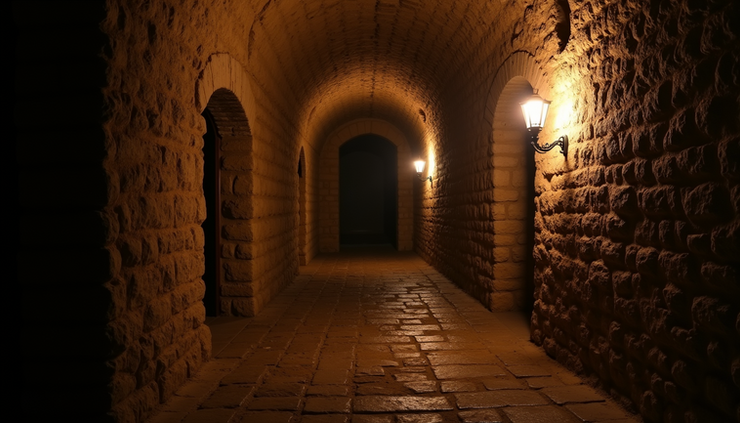Poe's Phantom Footsteps: Imagining His Gothic Legacy in Spanish Landscapes
- Franco Arteseros
- 4 days ago
- 3 min read
Edgar Allan Poe’s stories often echo with shadows and whispers, weaving Gothic horror with a rhythmic pulse that haunts the mind. Among his tales, The Pit and the Pendulum stands out as a chilling narrative set in Spain, a country Poe never visited but vividly imagined. Spain, in Poe’s work, becomes more than a backdrop—it transforms into a symbolic terrain where fear, history, and mystery converge.
Spain’s dark corridors and ancient dungeons serve as metaphors for the human psyche’s depths, a place where time slows and dread lingers. This post explores Poe’s imagined relationship with Spain, blending historical insight, creative speculation, and poetic reflection to reframe his legacy through a Spanish lens.

Historical and Literary Context
Though Poe never set foot in Spain, his stories often reference Spanish locales and history. The Pit and the Pendulum unfolds in Toledo during the Spanish Inquisition, a period marked by fear and brutal justice. Poe’s use of historical distortion is notable: he places Jacobins, French revolutionaries, in a Spanish dungeon, blending fact and fiction to heighten the story’s psychological tension.

In 19th-century Spain, Poe’s work found curious reception. Writers like Cecilia Böhl de Faber and Juan Valera engaged with his tales, intrigued by their dark themes and rhythmic prose. Poe’s Gothic style resonated with Spanish Romanticism, which also embraced the mysterious and the macabre.

Spain’s history, with its mix of religious fervor, political intrigue, and cultural richness, offered fertile ground for Poe’s imagination. His stories reflect a fascination with the past’s shadows, where memory and myth intertwine.
Creative Reimagining
Imagine a fictional Poe wandering the rugged Basque coast, his thoughts drifting like the waves against rocky cliffs. He writes letters to “La Muerta,” a spectral muse who inspires his darkest verses. In this reimagining, Poe’s dread merges with Spanish mysticism, creating a new poetic rhythm.

Franco’s metaphors enrich this vision: geraniums blooming defiantly on cracked stone walls, Rasputin’s enigmatic gaze reflecting in the night, the ancient Codex Mendoza whispering forgotten histories. Poe dons a Derby hat, a symbol of his outsider status, while Elena, a muse from Algorta, guides his pen.

This blending of Poe’s psychological horror with Spanish symbols creates a haunting narrative. The Basque coast becomes a liminal space where past and present, life and death, reality and dream collide.

Bilingual Flourishes
Poe’s imagined Spanish journey is enriched by bilingual echoes. Phrases like “El cuervo sobre el caserío” (The raven over the farmhouse) evoke his famous poem The Raven while grounding it in Spanish soil. These fragments reflect a voice shaped by two languages, two cultures.
Franco’s creative lineage shines through these bilingual touches, connecting to Tía Conchita’s stories and the rhythms of Algorta’s streets. The language itself becomes a bridge between Poe’s American Gothic and Spain’s poetic tradition.

This bilingual interplay invites readers to experience Poe’s legacy not just as a foreign import but as a living dialogue between cultures.

Reflecting on Poe’s Spanish Haunting
What does it mean to haunt a place you have never seen? Poe’s stories suggest that haunting transcends geography. It lives in memory, imagination, and the symbolic weight we assign to places.
Spain, for Poe, is a landscape of the mind—a realm where fear and beauty coexist. His Gothic legacy in Spanish settings invites us to explore how stories cross borders, how imagination reclaims history, and how cultural echoes shape our understanding of the past.

This reimagining encourages readers to see Poe not only as an American writer but as a figure whose shadows stretch across oceans, touching the stones and stories of Spain.

Franco Arteseros....




















The moon hung low o’er Calle Real,
Its silver eye a ghostly pall—
The stones beneath my boot did groan,
As if the earth recalled its own.
A whisper stirred the Prado’s gate,
Not wind, but something born of fate.
The statues wept in silent dread,
Their marble mouths now filled with lead.
I passed the crypt of kings and thieves,
Where shadows danced like falling leaves.
A raven perched on Goya’s bust,
Its feathers soaked in ancient dust.
“El alma duerme,” it did cry,
Its voice a blade against the sky.
I asked it, trembling, “Is she near?”
It answered not—but drew me near.
The lanterns bled a crimson hue,
As if Madrid itself once knew
The weight of…